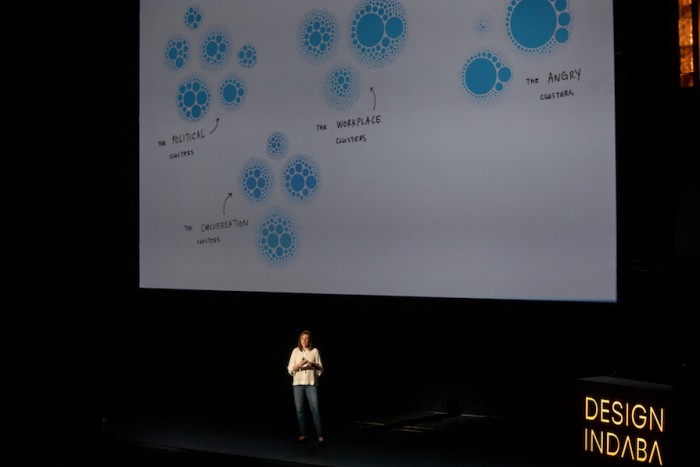Ellie Frymire wanted to know what people were really saying with the social movement, #MeToo. With a background in coding, analytics and design, she looked at what themes and topics were most prominent in the conversation using unsupervised machine learning algorithms, which allowed her to make inferences from data sets.
Called k-means clustering, this made it easy for her to understand the movement’s growth and underlying issues. Frymire illustrated her findings on an interactive webpage. By hovering over the groups she identified, users can read the stories and learn more about the various clusters.
She identified these clusters by scraping through 1,4 million tweets and discovering 5 major themes: politics, workplace, anger, conversation and uplifting. For instance, she discovered that the word ‘power’ came up often in tweets about sexual assault in the workplace.
“I think a core tenet of the movement is the abuse of power and these tweets included both stories about abuse in the workplace but also conversations about how the workplace was changing,” said Frymire in her Design Indaba Conference 2019 talk.
The #MeToo movement first came about through activist Tarana Burke as a way to raise awareness of sexual abuse and assault in today's society. It was taken to new heights when actress Alyssa Milano forwarded the trend on social media. From there #MeToo garnered over 1.3 million tweets within months.
“A tweet is not just a number. That is a real and lasting experience for that person. The #MeToo movement means so much more,” explains Frymire.
Adding: “To me, this movement is not done and never will be done. Not only is the #MeToo movement continuing to grow and expand with new allegations and stories but our ability to understand digitally needed social movements is growing every day.”
More from our 2019 speakers:
Keenan Wyrobek on saving lives with drones
Rodrigo Garcia Gonzalez on tackling the world’s problems with creativity








